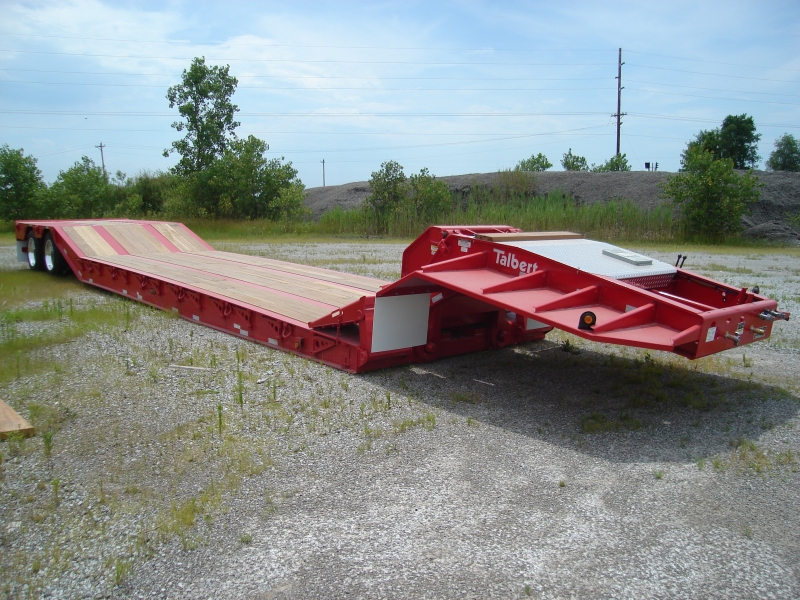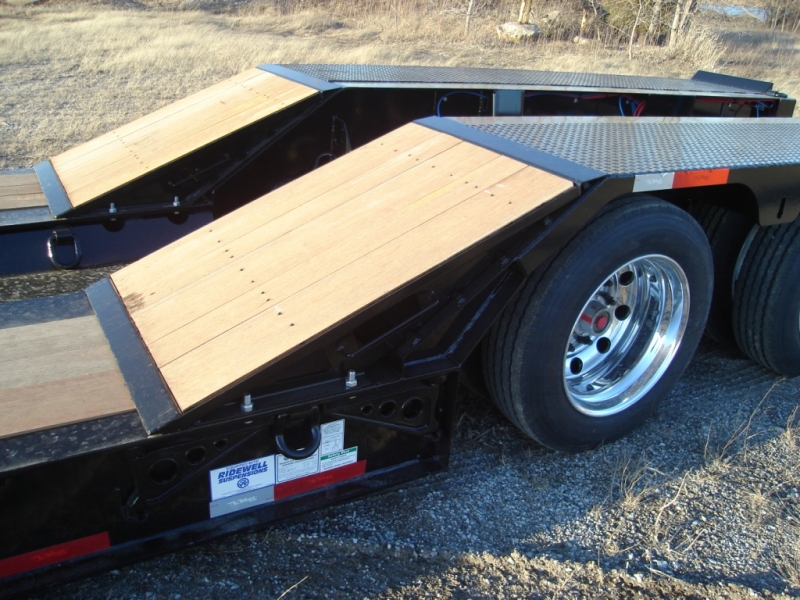
Paving equipment presents a number of unique challenges when it comes to transportation. In addition to low ground clearance and gentle slope transitions from the front ramps to the deck and from the deck to the rear of the trailer, operators must also consider mixed-load versatility to maximize not only efficiency, but overall trailer ROI. Additionally, ensuring the safety of crews, the public and equipment relies on spec’ing the right trailer. Here are three considerations to help contractors select an appropriate trailer for safe, efficient paving equipment hauling.
Load Angle
When it comes to hauling paving equipment, one of the biggest challenges is often getting the equipment onto the trailer. Rollers, pavers and other low-clearance equipment require longer loading inclines, whether loading from the front or rear. Larger capacity models also require a gentler load angle at the rear. Meeting this extreme requirement isn’t impossible, though, it just takes the right approach.
For equipment 25 tons or under, tag-a-long trailer models can be used to transport low-clearance equipment. Load angles will vary by manufacturer with some as low as 7-degrees. However, minimizing load angle is achieved through longer ramps and beavertails. This can limit where a trailer can be loaded or offloaded. Additionally, longer ramps are also heavier, making raising and lowering them manually a labor-intensive process. To eliminate the need to handle heavy ramps, look for a trailer with air ramp or air tilt capabilities. This increases efficiency and safety.

Lastly, when considering load angle — regardless of whether equipment approaches the trailer from the front or rear — a smooth transition from surface to surface is imperative. Any bumps between the ground and the deck or the deck and the rear bridge can make loading more difficult and dangerous since it forces equipment operators to increase power to clear the obstacle.
Capacity
Next to load angle, capacity is probably the most important factor in spec’ing a trailer. Unfortunately, it can also be deceiving at times since determining a trailer’s true capacity often means looking beyond the number on the spec sheet.
Not all 55-ton lowboys are created equal. They might all be capable of hauling 55-tons, but informed operators know load concentration plays a huge role in how well they perform at that weight. Some trailers will need the entire deck length to haul 55 tons safely, while a trailer from another manufacturer might only need half the deck length for the same weight. Since loads are rarely uniform, having a trailer rated in half deck capacity gives operators a more realistic indication of what the trailer will be able to handle without structural failure. Manufacturers that offer half deck capacity usually design with a two-point rigid load base that accounts for the tire spacing — or hot spots — of large equipment and heavy machinery. This makes trailers with a half-deck rating more versatile and efficient for these loads.

Dimensions
In addition to load angle and capacity, operators must also consider the size of the equipment they will be hauling. Starting with the largest piece of equipment, identify the height, width and weight. Keep in mind what’s on the spec sheet might not include accessories. Additionally, operations looking to move multiple pieces of equipment in one trip should factor in the combined weight and dimensions.
This information will help determine the maximum loaded deck height to keep the load from being oversized — less than 13 feet, 6 inches tall. All trailers are designed with a certain degree of camber, or the arch that forms in the center of an empty trailer, which helps prevent excessive deflection in the main beams. As the trailer is loaded, the arch flattens. A full load means a flat deck, resulting in the advertised loaded deck height. Keep in mind, a trailer that’s not loaded to capacity might be higher because the deck has not completely flattened under the weight of the load.
Once maximum dimensions are determined, it’s time to find a trailer that brings it all together.
Paving a Path to Success
Spec’ing a trailer for paving equipment might come with a few more considerations, but having the right rig promises increased safety and efficiency on every job. Taking the time to work through the options with experienced dealers and manufacturers helps operations ensure they’ve got the right trailer riding between the road and the load for long-term success.
What considerations are crucial when spec’ing a trailer for hauling paving equipment?
Key considerations include load angle, which affects equipment loading efficiency and safety, capacity beyond the specified tonnage, and dimensions matching the equipment's size and weight.
How can operators minimize load angles when transporting low-clearance paving equipment?
Operators can minimize load angles by choosing trailers with longer ramps, beavertails, air ramp, or air tilt capabilities, ensuring a smoother transition from the ground to the deck and enhancing efficiency and safety during loading and unloading.










































